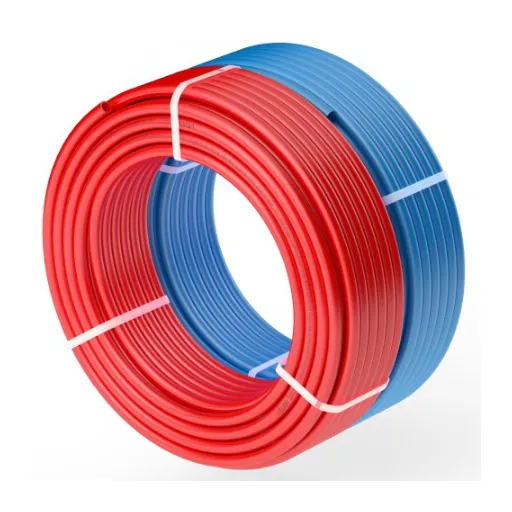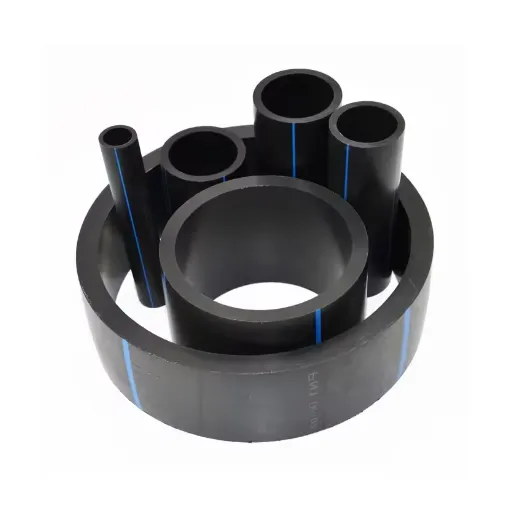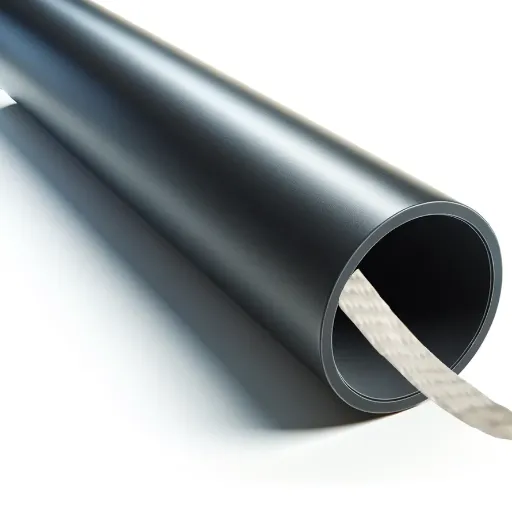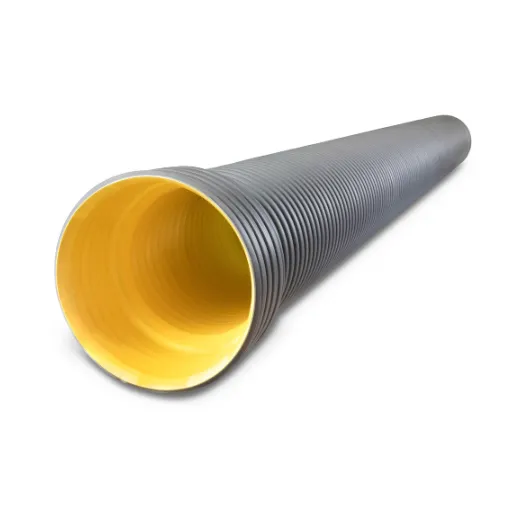The role of the building of water supply system that is reliable and operational for a long time is the most vital one in building the water supply provision. 2-inch PEX (cross-linked polyethylene) pipe in its rigidity, ease of application, and the fact that it is a piping material of quality is likely to outperform other technologies in the emerging markets. There are many pipes in the market, but 2-inch PEX tubing is excellent and stands out as a star. A guide that will cover all the features, advantages, and areas of application of PEX pipes will be provided. If the reader is a contractor, plumber, or homeowner needing a recommendation on which is the best pipe for their water system, the article will be a great help. Make sure to go through the article to find why a 2-inch PEX pipe is what your next project is badly in need of.
Understanding PEX Tubing
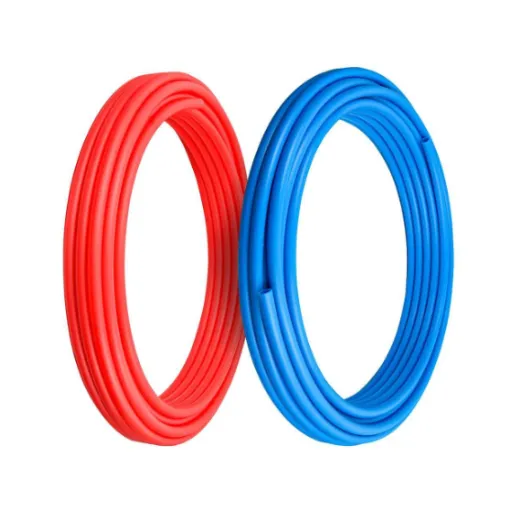
What is PEX?
PEX refers to cross-linked polyethylene, an elastic and sturdy plastic tube employed in plumbing systems of residences and commercial buildings. It is designed to accommodate water transportation purposes, and is therefore a suitable choice for the hot and cold water systems as well as the radiant heating systems. PEX’s performance is distinctly marked by its capacity to withstand fluctuating pressures and temperatures over time without undergoing oxidation.
Key Advantages of PEX:
- Flexibility and ease of installation
- Reduced scaling and clog prevention
- Minimized water hammer noise
- Various dimensions are available for different applications
Because PEX can adjust to various shapes, one can appreciate the ease with which the PEX plastic is used during the installation process, as compared to the rigid PVC and copper. The absence of the need for multiple additional fittings adds to ease of use, speed of use, and even cost. PEX also has the clear advantage of reduced scaling and, as a result, reduced chances of clogs and debris stuck in the pipe. And it’s also less troublesome when it comes to operation, as it minimizes the odds of water hammer noise.
Flexibility isn’t the only thing that PEX pipes have in their portfolio of valuable characteristics. They also come in different dimensions, with the 2-inch option being especially useful for large-scale transportation, such as that needed in industries or commercial enterprises. Its manifold versatility, be it in households, industries, or shop floors, allows the address of tube transportation and management with a permanent and sustainable solution. Quite significantly, it’s key to notice that its gradual phase out of acceptance and conventional use is testimony to the improved service when compared to the conventional pipe plastics.
Types of PEX Tubing
There are three PEX pipes based on the process polyethylene molecules are linked. Each suits specific applications and has distinct advantages, providing distinct advantages.
PEX-A
PEX-A is made through the Engle process. This is the most flexible. If needed, this can be installed without any need for fittings in the compact spaces. The excellent freeze resistance means it is most suited for cold water.
PEX-B
The PEX-B uses the Silane method to manufacture tubing. These are relatively harder than PE-Xa. It has an oil percentage that has better chlorine and alkali resistance. So, it is widely used to sanitize, and the pricing is competitive
PEX-C
For PEX tubing, PEX C is the most ductile and is the product of an electron beam that is used to molecularly connect polyethylene materials. PEX-C is the least flexible, but this makes therm suitable for long and fixed installations. There is a possibility of unwanted formation, but they can be mitigated by implementing PEX-A and PEX-B smart installation techniques.
Choosing the right PEX tubing for a project will depend on the type of work as well as the location. Taking the time to understand the purpose of the three tube varieties makes it easier as well as increases the longevity of the fittings.
Benefits of Using PEX for Plumbing
-
PEX’s Bendability and Easy Installation
Replacing copper lines with PEX tubing reduces the need for heavy bendable material and obstructions. No matter what obstacles and corners there may be, minimal installation is needed. Whether copper or PEX is considered for installation, it is indubitable that the latter requires less manpower. Its weight reduction of the piping material, basically, gives a reduction in the number of workers needed to install plumbing.
-
No Chance of Erosion or Scaling
Some of the major problems with traditional metal piping are resistance to corrosion and the disabling of scaling by groundwater. There is no chance of these effects with PEX piping. As a result, there is less risk of premature breakdown of the piping, and the installations last longer.
-
Better Handling of High Temperatures and Pressures
PEX piping does not degrade with the increased standards of temperature and pressure variation in water. That means that it is useful to employ in both low and high temperature systems without suffering from degradation. PEX piping can be employed for water and fuel systems, and the cost of the repair and change of the piping is significantly lower due to this advantage.
-
Economically Viable
PEX saves a lot of money in material costs as well as installation charges. Studies have shown that be as low as 25% to 30% as compared to copper systems. All the parts used for PEX are cheaper compared to copper, resulting in the maintenance charges being significantly lower.
-
Silent Operation
PEX tubing reduces the noise of water hammer and other sounds caused by water passing. This is particularly beneficial in homes to ensure quiet and more comfortable systems.
Applications of 2-Inch PEX Pipe
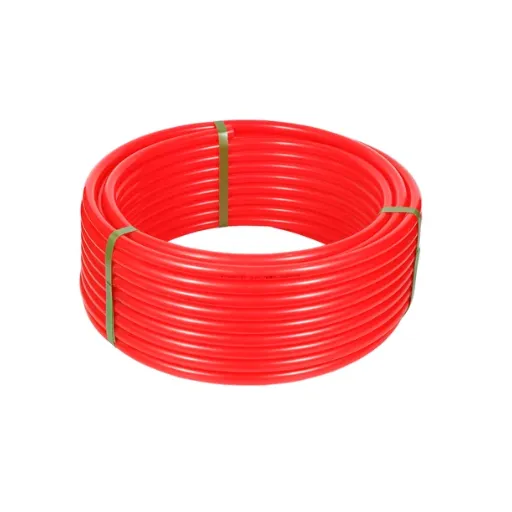
Residential Plumbing Systems
The introduction of PEX piping in residential plumbing is revolutionary and superior to traditional plumbing materials such as PVC and copper. It has numerous flexible features, owing to which it can be easily installed in confined or difficult areas. This aspect greatly reduces the workforce and enables workers to do more with less. The feature also allows PEX pipe to be very cost-effective when it comes to the cost-time framework. Owing to these time-conserving advantages, PEX pipe becomes greatly more reliable and is resistant to many of the frequent issues, such as scaling and corrosion in PEX piping.
Ideal Residential Applications:
- Supply lines to large homes
- Bathtub systems
- Multiple shower systems
- High-pressure water systems
Factually speaking, 2-inch PEX pipelines are the recommended size for larger water flow applications such as supply lines to large homes, bathtubs, and multiple shower systems. The systems are designed to work efficiently under high-pressure water systems to avert bursts that are always common. Homeowners are expected to have better and consistent distribution of water. PEX pipes can be used for both hot and cold applications, as they can handle the varying temperatures on the piping without any issues. The capability to handle the varying temperatures has made PEX pipes one of the most reliable options for plumbing that can cater to the needs of modern and highly demanding houses.
PEX plumbing has many well-known benefits, such as the new PEX plumbing’s ability to sustain hot water efficiently. The PEX pipe’s thermal properties trump those of the older plumbing technologies, which directly translates to savings on the homeowner’s energy bill. Plumbers can generally agree that PEX pipes are far easier to work with than the traditional old metal pipes: traditional pipes required a thick coating of insulation if they were to maintain their interior temperature over any significant distance. PEX pipes, in comparison, require little to no insulation. When a PEX pipe does not need to have insulation and comes at an affordable price, not to forget the durability and ease with which it can be installed, it is normal to see 2-inch PEX pipes become the standard for highly developed plumbing in newer homes where ease, efficiency, and cost-cutting are the main goals.
Heating Systems with PEX
PEX is popular in modern heating systems for its ease of use, low cost, and superior performance. PEX can be effortlessly integrated into underfloor heating systems for remarkable performance. These systems are used to circulate water through PEX installed under the floor in order to radiate heat softly into a room while consuming less energy, a benefit not possible with traditional HVAC systems. PEX can be offered at a good rate and at an accurate price, and can save a lot of money with less installation effort, so it is economically favorable.
An additional advantage of PEX is its resistance to scaling and corrosion. Hot water treatment facilities are overwhelmed by traditional metal pipe hot water treatment failures. But PEX pipes are almost indestructible to chemicals and high temperatures. They also lack corrosion and are resistant to scaling. This engineering lets the heating systems provide enduring services without demanding service, and this maintenance is cost-effective. Complex radiant heating and underfloor heating can be completed with the help of PEX pipes in comparison to rigid copper material. PEX is significantly faster and simpler to install.
PEX systems have started being utilized in the heating of business premises, excluding residential buildings. Business premises like large office blocks and industries in particular use PEX for heating; this is known as hydronic heating. Hydronic heating uses water or steam to distribute heat. The use of PEX in hydration heating targets the whole city. PEX happens to be lightweight, which provides industry ease in application. PEX solves the hydronic heating issues and provides a good, effective solution. In hydration heating, PEX can be applied to a scale of storage appliances, which helps in performing the function of water storage on a city-wide scale and provides the extreme comfort of not doing the work in the area it intends to solve. PEX’s hydration heating in comparison to other rigid appliances is effective. PEX is good for heating because it is called oxygen polymer PEX; it is a polymer. Its grade and particular form are limited. PEX is effective in heating because it is simple.
Commercial Applications
In the line of business, PEX piping is known for its efficient and cost-effective solutions and durability in a wide range of commercial projects. And, these are the main areas PEX tubing is utilized in the business:
Radiant Floor Heating
Radiant floor heating is PEX tubing’s specialty. With its widespread use, it is not difficult to achieve its even and efficient heating like PEX tubing does. When radiant floor heating is used with PEX tubing, especially due to its adaptability and ease of setting up, it works out so well in the larger areas like storage and office complexes. The use of PEX tubing also helps in reducing energy consumption. Heating systems with PEX tubing reduce heating bills compared to traditional heating systems available.
Potable Water Systems
PEX tubing is starting to be used in large commercial installations for the fresh water piping. Also, PEX tubing has a greater resistance to deterioration and costs less to install compared to traditional metal piping, which is an advantage to apartment complexes and hotels.
Hydronic heating
Under the names of stores, schools, and hospitals, PEX is one of the best materials to use. From the high water temperature that’s not normal, it does not even come close to failing that. It also helps in the reduction of water heating costs. High efficiency is reached in space heaters with the help of PEX components in the streamlined heating system.
Chilled Water Distribution
Cooling a commercial building is very easily achieved by the use of PEX tubing. Cooling prevents the building from wasting energy and hence reduces the energy bills. Installation is very easy in tight places. Resistance to cracking under low PEX tubing temperatures is provided in the application of commercial cooling.
Snow Melting Systems
For the areas that have snow and ice, PEX is used in snow-melting systems that are located under parking lots, sidewalks, and driveways. This proves to be really useful because the possibility of accidents is reduced, along with the requirement for chemical deicer. It is made so well that even under extreme conditions, this system is functioning.
The applications of PEX and the innovations featuring it prove its steady growth in relevance toward commercial water body systems.
Installation Guide for 2-Inch PEX Tubing
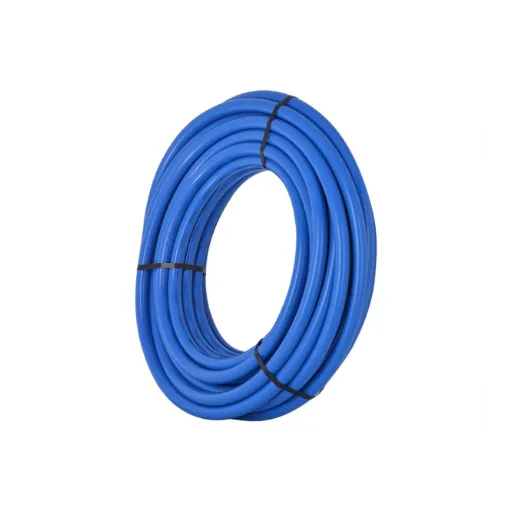
Tools and Materials Needed
Here are the tools and resources that you need to complete the smooth installation of a 2-inch PEX tubing setup:
- PEX Tubing that measures 2 inches in diameter
- Gripping ratchet or PEX Crimping tool
- PEX Fittings for 2-inch (50-mm) PEX tubing
- PEX Cutter
- Construction drill with Hole Saw Attachment
- Long-handled plumbing wrench with a Needle Nose
- XPS Insulation (for added rough-in insulation)
- Retaining straps, Pedestal or Screed Toe Clips
- Felt/Fixing Buttons
- Cut-resistant, rubberized gloves
Prepare and organize the above pieces, and you will be able to dramatically simplify your PEX installation while providing your PEX with a very long and efficient life expectancy. Always ensure and thoroughly confirm that your tools and materials are compatible to avoid installation setbacks.
Step-by-Step Installation Process
Prepare Your Workstation
The first step is to make sure the environment is free from unwanted objects or debris that could potentially disrupt the installation process. Remember to also check for materials and tools, and have them ready and properly packed so they can be easily accessed. Furthermore, take a look at the layout you created for the PEX tubing, which will help prevent any mistakes during installation.
Measure and Cut the PEX Tubing
Determine the necessary tubing lengths using the blueprints for your installation, and remember to mark these lengths clearly using a pencil or marker. The ideal tool for cutting the PEX tube is a PEX tube cutter due to the clean and precise cuts it offers, and is essential for leak-free, predetermined connections.
Fit Connectors and Seal Fitting
At the points where the joint is to be made, to the PEX pipe, attach the appropriate connectors. Also, consider using a silicon ring or a crimp ring to attach the pipe and connect it to the connector, leaving the dimensions in the blueprints. Use the correct clamp crimp tool to ensure that the connection is well sealed without altering the dimensions of the connector.
Tubing Securement
Introduce the PEX tubing through the route indicated in the plan and secure it using pipe hangers. Always employ the suggested securement devices that are designed for the particular tubing. Over-torquing might lead to excess pressure on the tubing, which is likely to lead to a reduction of flow efficiency, thus slowing down the installation process. To ensure that the tubing runs effectively and the outcome of the design stays unaffected, guide the PEX tubing in the marked plan.
Testing the Pressure
The pressure testing is meant to evaluate the integrity of the installation for any leaks. The installation is not recommended while the lines are still the pressure test. Oval and Everdue connections final inspection for any signs of drip. Gaskets and joints that are acting up should be jointly sealed, and fittings that are worn at the mark.
Wrapping and Finishing Off
If the PEX tubing will be aggregated to an old system or the use of ‘open’ pipes, it is important to provide insulation. The insulation is to be tied or secured with a stable tape to the PEX tubing. For a well-done job, ensure checkups are carried out for a final time. All fittings and joints should be secure, and compression of the completed job should be checked. To avoid compression, the entire system should be checked.
The whole process, while time-consuming and detailed, is very important and should be considered as such. PEX tubing is used for general purposes and is not special in any way. It is as simple as PEX plumbing. Make sure to read and do as instructed in the installation manual because installation operation is simple, but proper management is time-consuming. Always ensure you follow local regulations and in-house rules to be safe and prevent any kind of issue that may occur, and have detailed issues.
Common Mistakes to Avoid
For PEX tubing installations, there are some typical pitfalls to avoid to prevent hindering the durability and efficiency of the system. The following will help ensure an efficient installation process:
⚠️ Critical Installation Mistakes:
❌ Selecting Incompatible Fittings
It’s crucial to understand that PEX tubing is available in three different types (PEX-A, PEX-B, and PEX-C), and it’s the responsibility of the installer to select the suitable type of fitting. Wrong fittings can cause leaks or poor connections, damaging the operation of the system.
❌ No Accommodation for Thermal Expansion and Contraction
Expanding and contracting along with shifts in temperature, PEX tubing has its own unique property. It is in danger of developing kinks or straining the fittings, and should certain it, even if the kinks are slack, and observe recommended installation orientation and proper acquisition and use of the fittings in the system.
❌ Over-Tightening the Joints
Tubing and fittings can deform, develop unnecessary and gradual wear, and eventually cause leaks over time if they are damaged as a result of overtightening of the clamps or the excessive application of force. The use of the correct tools calibrated for PEX installation could help avoid these issues.
❌ Allowing PEX Tubing To Be Exposed to Direct Sunlight
Tubing must be kept the tubing safe from prolonged and direct sunlight. The ultraviolet-exposed material will lessen and, in turn, reduce the overall longevity and material strength. Either shield from the sun or use UV-resistant protectant material to safeguard against partial exposure to the harmful element.
❌ Failing to Do Pressure Tests Properly
Performing thorough pressure testing is easily the most critical part of the plumbing work. Without a well-thought-out pressure test, little leaks and pressure points will go unnoticed and be disastrous in later stages. So, please do your pressure test properly and ensure proper installation and seal verification.
❌ Not Considering the Insulation in Cold Regions
The outdoor temperatures and the tube of the tubing are a perfect recipe for a pipe bursting, so the risk is higher for bursts. One can save all the work gone into installing the tubing using PEX if they use the correct insulation. With PEX tubing, use the top-tier insulation, and during the warmer seasons, use the tubing for other purposes.
❌ Ensuring no Standard Safety Shortcuts remain with PEX
The equipment is specifically manufactured to install PEX to a defined standard. Take heed to exclusively follow manufacturer guidelines, and you will maintain standard materials and installation values. You will ensure a proper return on any investment, time, and energy spent during the PEX installation. Applying these fundamentals, you acquire a safe and secure PEX line.
Inspections coupled with checkpoint maintenance enhance the lifespan of any PEX tubing. Through efficient drainguardment checks and follow-up inspections, problems are easily unearthed, posing no real challenge when providing the necessary maintenance.
Maintenance of PEX Plumbing Systems
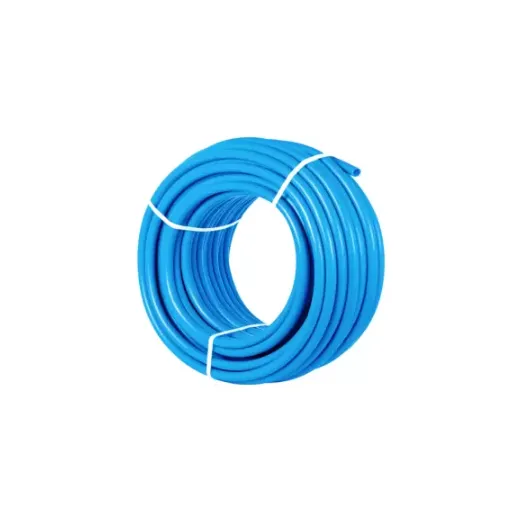
Regular Inspection Techniques
A PEX water plumbing system ought to be inspected for better operation and durability. Directly examine the PEX pipes for aging, discoloration, and bruises. Pipes may have pinhole leaks, overbends, or dividends caused by the environment or sun. Lastly, the plumbing system should be checked for any high-pressure joints that have leakage or corrosion.
🔍 Key Inspection Points:
- Check for aging, discoloration, and physical damage
- Look for pinhole leaks and over-bends
- Inspect high-pressure joints for leakage or corrosion
- Evaluate water pressure consistency throughout the system
- Check insulation in cold-prone areas
- Use moisture meters near concealed pipes for leak detection
There is yet another valuable technique: evaluating the plumbing system for even water pressure, which can be a huge help in the identification of blockages and potential leaks. The insulation of water pipes should be checked in places that get cold during the winter, as pipes with bad or no insulation pose a risk of bursting due to freezing, especially in case of extreme weather. The use of a moisture meter near concealed pipes allows for potential leaks to be detected before the leak worsens, which otherwise leads to the need for extensive and costly remediation in the future.
These types of inspections, notably after significant weather events such as earthquakes and freezes, should be carried out at least once a year to ensure water and plumbing system reliability. Pair comprehensive manual assessments with advancement tools like leak and pressure monitoring sensors for systems that have the most advanced care of detection.
How to Extend the Lifespan of PEX Pipes
For PEX (cross-linked polyethylene) pipes, there’s a risk that can easily be managed: the longer their exposure is to the outside world, the lower their lifespan will be. It goes without saying that proper installation methods can extend the plumbing system’s health for a number of years. Here are the challenges and practical strategies:
☀️ Keep the PEX Pipes Out of the Sun
In the sun, PEX pipes can stand strong against any impact, but their weak point has always been UV radiation. In this case, it is very important that before the installation of the pipes, the sun is blocked out, and when it comes to sun exposure in an outdoor space, the pipes do not come under direct sunlight.
⚡ Maintain Precise Pressure
It is practical to maintain the pressure of around 40 to 60 psi in PEX systems. This helps prevent corrosion in the pipes and also helps maintain a consistent flow in the pipes. It is also suitable for use in pressure-reduction valves.
🔧 Use Fittings That Are Approved and Conduct Tests
Multiple PEX systems fail due to the fittings not adhering to the system standards. It is wise to use the durable and standard-approved brass or plastic fittings, while also ensuring that the fittings are properly secured. This might help in the early detection of the issue in the long term.
❄️ Guard Against Cold Climates
PEX insulated piping does not freeze, but it tends to get a bit stiff in low temperatures, which might lead to cracks. If the PEX pipes are in the basements, attics, or crawl spaces of a building, be sure to insulate the piping to reduce the likelihood of freezing and, consequently, cracking.
⚙️ Proper Installation
Sharp bends and kinks in properly installed PEX crimpers need not be over-tightened. This attribute is essential in securing a properly installed PEX piping. The use of tried and tested PEX crimpers and support brackets reduces the risk of bends or kinks and guarantees proper installation.
📊 Inspections And Monitoring
Leak detection systems with modern sensors can provide real-time analysis and coverage of the overall system performance, which can be a proactive framework in the management of the system’s health. Schedule check-ups are a good indicator of any weaknesses in the systems that can be patched up to increase the life of the overall system.
With PEX piping, preventive measures should be maintained, along with the scheduled maintenance and the use of smart technology, which can offer a lot of benefits to the system of the home, save PEX pipes and smart devices, cost, and, most importantly, time.
Comparing PEX with Other Piping Materials
PEX vs. Copper: Which is Better?
If you weigh the benefits, the choice eventually boils down to the individual’s needs. PEX can often be your best bet, while you can’t go wrong with copper if you need something long-lasting or durable.
| Aspect | PEX | Copper |
|---|---|---|
| Price | Lower | Higher |
| Bendability | High | Low |
| Strength | Moderate | High |
| Rusting | Resistant | Prone |
| Sunlight | Not Suitable | Suitable |
| Setup | Easier | Complex |
| Longevity | ~50 Years | ~70+ Years |
| Cold Tolerance | Expands | May Burst |
| Eco-Friendly | No | Yes |
| Flavor | Neutral | Metallic |
PEX vs. PVC: Pros and Cons
PEX is the more versatile and easier to use pipe, gives better protection against corrosion and freezing, and comes in freeze-resistant models. Meanwhile, PVC pipe is cost-effective, resistant to the sun, and is easy to use in more outdoor settings.
| Aspect | PEX | PVC |
|---|---|---|
| Price | Higher | Lower |
| Flexibility | High | Low |
| Durability | Moderate | High |
| UV Use | Not Suitable | Suitable |
| Setup | Easier | Complex |
| Freezing | Expands | May Crack |
| Lifespan | ~50 Years | ~50 Years |
| Eco-Friendly | No | Yes |
| Water Taste | Neutral | Neutral |
Cost-Effectiveness of PEX Tubing
Although PEX tubing is costlier in the beginning than PVC, the former nevertheless presents significant savings as it becomes more flexible, has a reduced need for labour, and becomes easier to install. There is also less need for PEX to have additional fittings compared to the more rigid pipes, which require major bending and curving to hold up the entire structure. This also means a reduced need for additional fittings, which means fewer connection points for water to start leaking. PEX also drains and transfers water, making it more suitable in terms of water transportation and flooding. Homeowners see long-term benefit in PEX tubes since it has less breakage and minimal maintenance, making it a cost-effective solution for the home.
💰 Cost-Effectiveness Factors:
- Reduced labor costs due to ease of installation
- Fewer fittings are required compared to rigid pipes
- Lower maintenance costs over time
- Reduced risk of burst pipes in freezing conditions
- Better corrosion resistance leading to longer lifespan
One other lesser-known reason for its cost-effectiveness is that PEX can take in water without damage, and it is also able to endure freezing temperatures. PVC is a good alternative, but with PEX, there is no cracking due to the variance in temperatures. This feature also helps in keeping the repairs low during cold months, allowing support to regions with varied temperatures. With limited bursts, the PEX tubing is also able to reduce financial damage to projects and even maintenance costs.
PEX saves additional costs with leadership management and takes a new look at corrosion control while promoting water with new taste requirements. The democratic age focused on green offers fresh awareness on PEX, even though grave challenges remain in PVC. PEX presents an excellent win when cost plus lastingness plus better handling results across different sectors are evaluated, making it exceedingly wise and tempting.
Frequently Asked Questions (FAQ)
Q: In what scenario does PEX tubing excel in contrast to copper?
A: During the remodeling process, PEX tubing can save a homeowner a great deal of plumbing costs in comparison to copper. PEX is free from scale and chlorine, and the system can be assembled significantly faster due to its flexibility. Moreover, PEX does not require maintenance to the extent that copper plumbing does.
Q: What is the procedure to install a 2-inch PEX pipe?
A: The foremost step in installing a 2-inch PEX pipe involves the measurement and cutting of the tubing. Crimp fittings or elbow fittings can attach it to the system; in doing so, all ASTM recommended guidelines must be followed strictly, and the entire assembled system, which should typically hold 160 psi of pressure, needs to be thoroughly tested.
Q: Can a 2-inch PEX pipe be utilized in hot water systems?
A: Yes, it is recommended to use 2-inch PEX for hot water applications as it can handle high temperatures, especially if it’s being installed in a heating system or a hot water line. However, it is crucial to verify that the wall thickness and temperature rating can guarantee maximum performance.
Q: How are PEX and traditional PVC pipes different?
A: The most important distinction between PEX pipes and PVC pipes lies in their material properties. PEX pipes are a type of thermoset plastic, specifically cross-linked polyethylene, which is more flexible and has greater resistance to freezing than PVC. Fuss-free connections are now a part of the picture as PEX does not require glue, which PVC does.
Q: Is 2-inch PEX pipe available on rolls?
A: Yes, 2-inch PEX pipe is freely available in rolls, which enables it to be more portable and easier to manage over long distances compared to pipes that lack such features. Roll availability means no joints, reducing the chances of leakage, and the pipe can be used to service water applications.
Q: Why is having an oxygen barrier important in the PEX tubing?
A: The oxygen barrier in PEX tubing is useful because it prevents the migration of oxygen into the pipe. This migration leads to premature failure of metal parts in a hot water system due to corrosion. Oxygen infiltration can be compared to the rusting of metal, and the prevention barrier plays a significant role in hot water circulation systems, ensuring a long-lasting and high-performing hot water system.
Q: What impact does the wall thickness of the 2-inch PEX pipe have on its performance?
A: Groundedly, the performance and pressure rating system of a 2-inch PEX pipe is affected by the pipe’s wall thickness. It can also be affected depending on the level of external damage, and thicker-walled pipes are required when it comes to water service systems in order to maintain the pipes’ overall integrity.
Q: Are different fittings needed for 2-inch PEX pipe?
A: Yes, unique fittings, such as crimp and elbow fittings, are needed for joining 2-inch PEX pipe. These ensure that connections are free of leaks and secure and are critical for maintaining plumbing performance.
References
Advanced Developments in PEX Downhole Exchangers for Direct Use Heating Applications
This document outlines the use of PEX pipes for heating purposes, along with the associated technical details and the systems’ performance.
Two Challenges in Premise Plumbing: Contamination Invasion and Alternative Pipelines
The focus of this research paper is on the use of PEX technology as an alternative to copper pipelines, specifically on the contamination as well as on the material features of PEX itself.
A New Method for Evaluating a Radiant Floor Heating System for PEX Pipe
This study on the use of PEX piping in radiant floor heating systems focuses on the recognition of its thermal and durable qualities.
Ready to Choose PEX for Your Next Project?
2-inch PEX pipe offers unmatched versatility, durability, and cost-effectiveness for your water systems. Whether you’re a contractor, plumber, or homeowner, PEX provides the reliable performance you need for residential and commercial applications.



